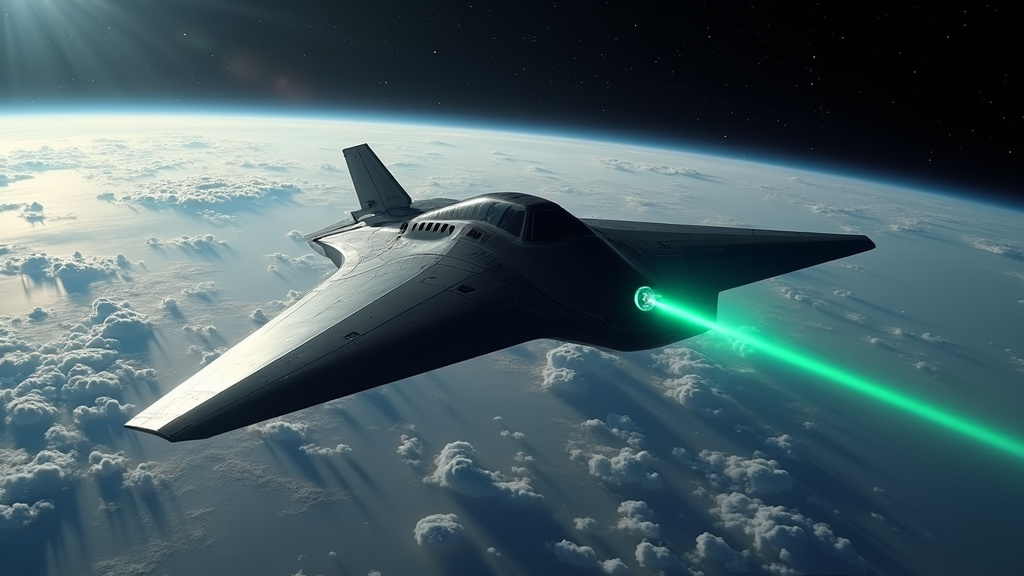In a major leap for advanced space capabilities, the U.S. Space Force successfully launched its X-37B robotic spaceplane on its eighth experimental mission, known as Orbital Test Vehicle-8 (OTV-8) or USSF-36, late Thursday, August 21, 2025, from NASA’s Kennedy Space Center in Florida. Carried aloft by a SpaceX Falcon 9 rocket, this uncrewed mission is poised to conduct groundbreaking experiments in space-based laser communications and quantum sensing, marking a pivotal moment in the ongoing evolution of U.S. orbital systems. The launch immediately became one of the top trending space events of the year, signaling a significant push by the Space Force to enhance the resilience and flexibility of its assets in an increasingly contested domain.
The X-37B: A Silent Sentinel of Orbital Experimentation
The X-37B, often described as a mini space shuttle, is an autonomous, reusable spaceplane built by Boeing. Measuring approximately 9 meters long with a wingspan of almost 4.5 meters, it is designed for extended missions in Earth orbit, serving as a versatile testbed for novel technologies before returning its payloads to Earth for analysis. The program, which originated with NASA in 1999 before transitioning to the Department of Defense, is now operated by the Air Force Rapid Capabilities Office in collaboration with the U.S. Space Force. This latest launch continues a remarkable legacy, as the X-37B has already completed seven successful missions, accumulating over 4,200 days and more than 1.3 billion miles in orbit. Previous endeavors have included demonstrating aerobraking maneuvers, testing space domain awareness technologies, and even exploring the effects of space radiation on various materials.
Revolutionizing Communications with Laser Light
A key focus of the OTV-8 mission is a cutting-edge experiment in space-based laser communications. This technology promises to revolutionize how data is transmitted in orbit, offering significantly higher data rates and improved reliability compared to traditional radio frequency systems. The X-37B will interact with burgeoning proliferated commercial satellite networks in Low Earth Orbit, testing high-bandwidth, tightly-targeted laser links. General Chance Saltzman, Chief of Space Operations, underscored the importance of this demonstration, stating it will “strengthen the resilience, reliability, adaptability and data transport speeds of our satellite communications architecture.” Laser communication is particularly attractive for military applications because its narrow beam makes it far more difficult for adversaries to jam or intercept, a crucial advantage in future conflicts.
A Quantum Leap in Space Navigation
Perhaps one of the most intriguing aspects of the OTV-8 mission is the inclusion of a quantum inertial sensor, described as the “highest performing quantum inertial sensor ever tested in space.” This payload is a vital component of the Defense Innovation Unit’s (DIU) Transition Quantum Sensing (TQS) program. The TQS program, launched in mid-2024, aims to rapidly mature and field quantum sensing technologies to enhance positioning, navigation, and timing (PNT) capabilities. Quantum sensors leverage atomic-level changes in movement and electromagnetic fields, offering unprecedented precision and sensitivity. This technology is particularly critical for enabling navigation in GPS-denied environments, thereby increasing the navigational resilience of U.S. spacecraft against emerging threats. Beyond Earth orbit, these quantum inertial sensors also hold immense promise for pushing the technological frontiers of long-distance space travel and cislunar exploration.
Strategic Imperatives in a Contested Domain
The X-37B’s mission is part of a broader, strategic push by the U.S. Space Force to ensure the safety and security of the space domain. The global landscape of space operations has become increasingly competitive, with major global events and significant investments by nations like China and Russia in their own space and counter-space capabilities. The Space Force’s strategy emphasizes building a resilient space architecture—shifting from a few large, vulnerable satellites to many smaller, interconnected ones, making it harder for adversaries to target. This mission, alongside a busy manifest of other space events planned for the coming year, directly supports the Space Force’s goal of achieving “space superiority” and providing the Joint Force with uninterrupted space capabilities, even in a contested environment.
As this major news continues to unfold, the data gathered from OTV-8’s cutting-edge experiments will be instrumental in shaping the future of U.S. space operations, from secure communications to autonomous navigation. Boeing teams, primarily based in Seal Beach, California, and Kennedy Space Center, Florida, are at the forefront of designing, building, integrating, and operating this vital testbed, underscoring the collaborative effort between government and industry to maintain America’s technological edge in the final frontier. The X-37B’s continued flights are not merely scientific endeavors; they are critical components of a national security strategy aimed at ensuring enduring U.S. leadership in space.





